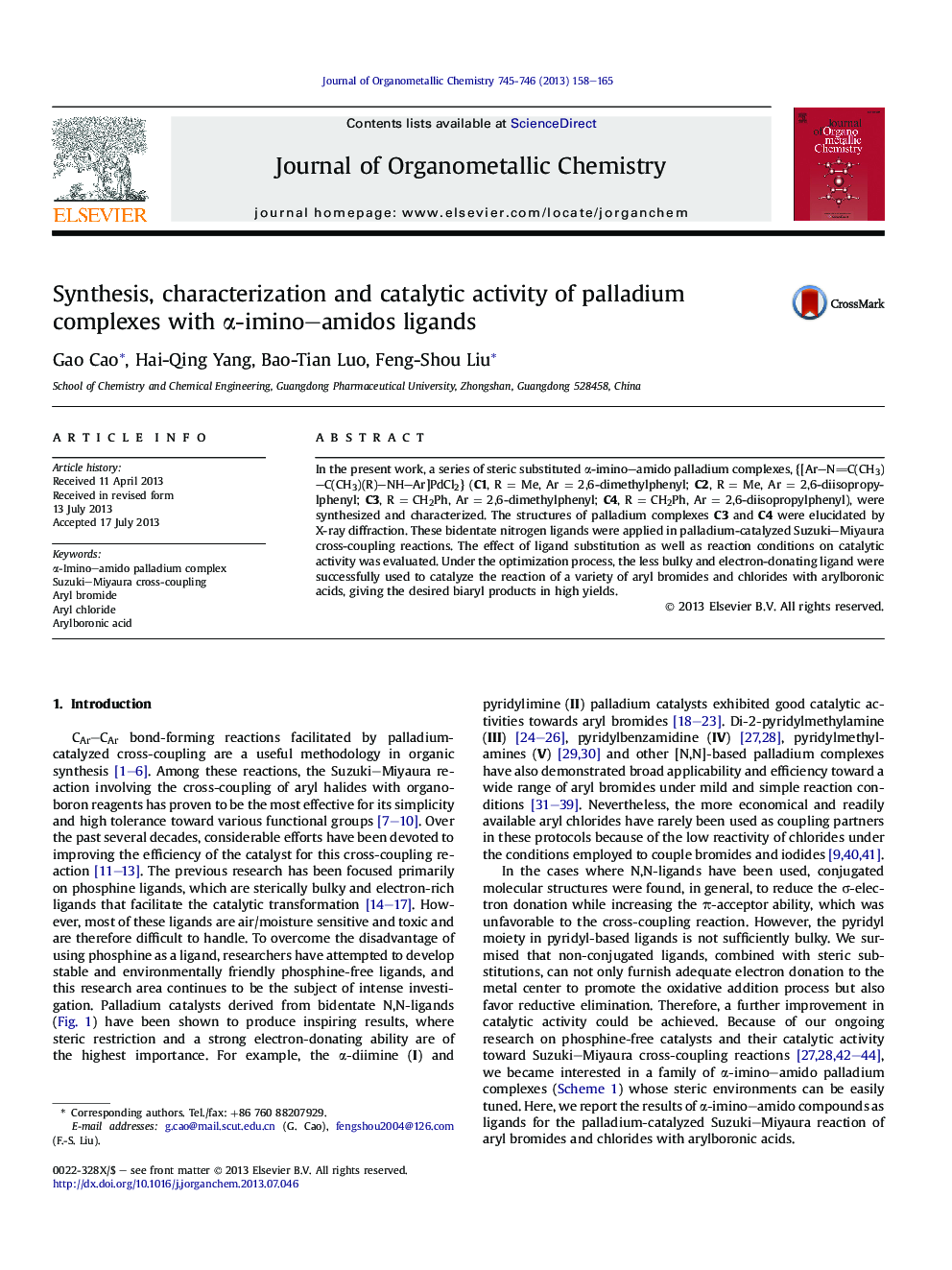| Article ID | Journal | Published Year | Pages | File Type |
|---|---|---|---|---|
| 1321528 | Journal of Organometallic Chemistry | 2013 | 8 Pages |
•A series of α-imino–amido ligands were synthesized and the solid structures of palladium complexes were revealed.•Catalytic efficiency of α-imino–amido ligands on Suzuki–Miyaura cross-coupling was explored.•The catalytic system showed high activity toward aryl bromides and chlorides.
In the present work, a series of steric substituted α-imino–amido palladium complexes, {[Ar–NC(CH3)–C(CH3)(R)–NH–Ar]PdCl2} (C1, R = Me, Ar = 2,6-dimethylphenyl; C2, R = Me, Ar = 2,6-diisopropylphenyl; C3, R = CH2Ph, Ar = 2,6-dimethylphenyl; C4, R = CH2Ph, Ar = 2,6-diisopropylphenyl), were synthesized and characterized. The structures of palladium complexes C3 and C4 were elucidated by X-ray diffraction. These bidentate nitrogen ligands were applied in palladium-catalyzed Suzuki–Miyaura cross-coupling reactions. The effect of ligand substitution as well as reaction conditions on catalytic activity was evaluated. Under the optimization process, the less bulky and electron-donating ligand were successfully used to catalyze the reaction of a variety of aryl bromides and chlorides with arylboronic acids, giving the desired biaryl products in high yields.
Graphical abstractA series of α-imino–amido ligands with different steric hindrance have been synthesized and were examined for Suzuki–Miyaura coupling reactions. Under the optimized conditions, it demonstrated a significant advance in the efficiency of the cross-coupling of aryl bromides and aryl chlorides with arylboronic acids to produce the biaryl products.Figure optionsDownload full-size imageDownload as PowerPoint slide
